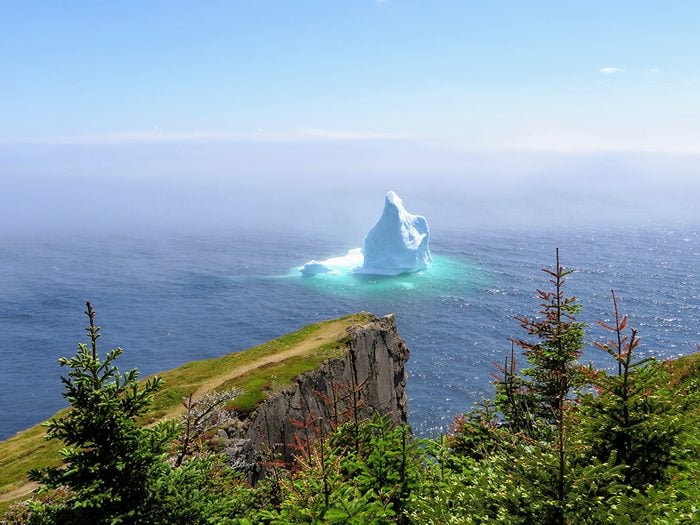
Iceberg Viewing on the East Coast of Canada
The east coast of Canada is home to natural wonders you simply can’t find anywhere else. In late May and early June, a parade of 10,000-year old icebergs cruise along Iceberg Alley, the area between the coast of Labrador and the northeast tip of Newfoundland. The sheer magnitude of the bergs is a sight to behold, and Newfoundland and Labrador offer many excellent shoreline viewpoints including St. Lewis, Battle Harbour, Twillingate, Bonavista and Cape St. Mary’s. If you’d rather get up close and personal with these icy monsters, hop on a boat tour, or paddle on a kayak for an unforgettable perspective.

Hopewell Rocks in New Brunswick
It’s a tough decision: low tide or high tide? At the Bay of Fundy’s Hopewell Rocks, there’s no need to choose. Indulge in the best of both worlds! Home to the world’s highest tides, the Bay of Fundy is an experience like no other. During low tide, the secrets of the Hopewell Rocks are revealed. Sink your toes into the warm sand of the ocean floor while you learn about the geology of the area, view hidden coves and discover how the rushing tides continue to shape the rocks today. Six hours later, the high tides return as water rushes in to hug the famous Flowerpot Rocks, providing a completely different perspective to this marvel of nature. Jump in a kayak and paddle around the towering sandstone pillars, or take in the view from dry land. Stay for the day and enjoy both tidal spectacles.
Check out more of Canada’s awe-inspiring natural wonders.
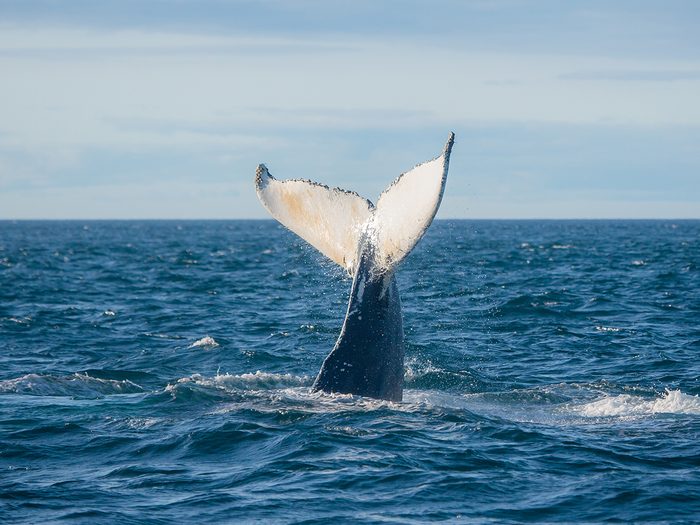
Whale-Watching in the Bay of Fundy
Is whale-watching on your East Coast of Canada bucket list? Come to the Bay of Fundy and make your dream a once-in-a-lifetime reality. Teeming with marine life, the mouth of the Bay provides the perfect feeding ground for a spectacular variety of nature’s largest mammals. During the summer and early fall, Minke, Humpback, Finback and North Atlantic Right Whales frequent this area to feast upon its bountiful underwater banquet. Best of all, not only will you spot whales, but dolphins, seals, sharks and plenty of sea birds such as puffins and gannets make guest appearances too. Whale-watching excursions sail from various New Brunswick and Nova Scotia ports during the summer months.
These stunning pictures of Nova Scotia will have you packing your bags for Halifax.
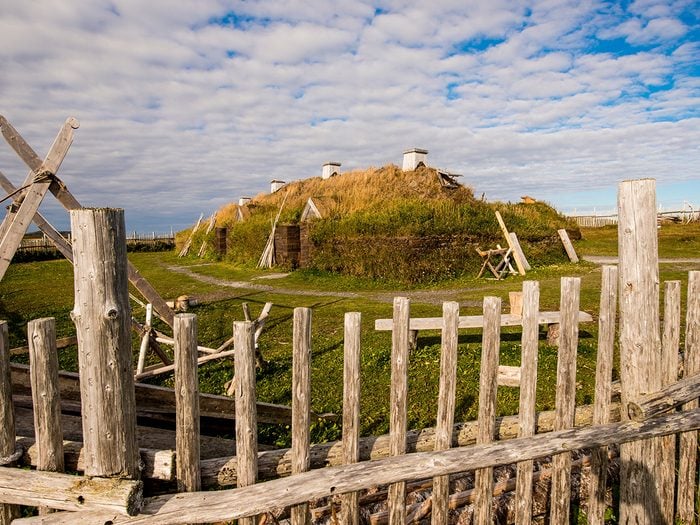
L’anse aux Meadows in Newfoundland
Did you know that Newfoundland was the first North American site discovered by European explorers over a thousand years ago? L’anse aux Meadows is the only authenticated Viking site in North America—the fabled Vinland of the infamous Norse sagas. Named in 1978 as an UNESCO World Heritage Site, L’anse aux Meadows welcomes visitors to explore its substantial Viking roots. Take a tour of the Norse ruins and discover life in 1,000 A.D. Newfoundland—Viking style.
Discover all 20 UNESCO World Heritage Sites in Canada.
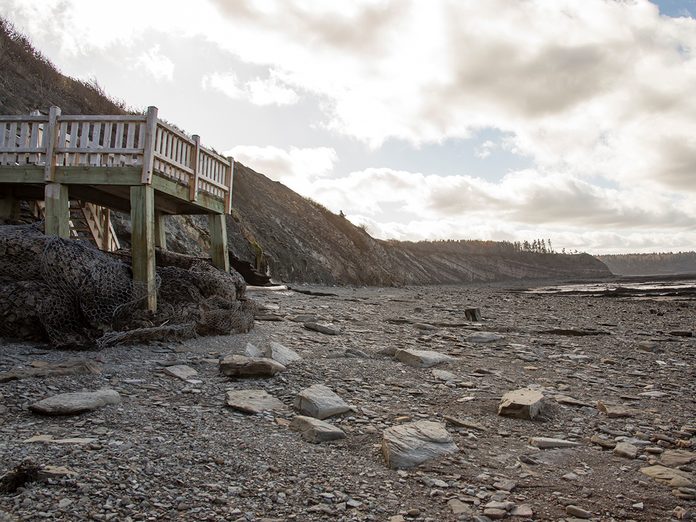
Joggins Fossil Cliffs in Nova Scotia
Home to an abundance of the world’s most important fossil discoveries, Joggins Fossil Cliffs is not only beautiful, but also geologically significant. It was here in 1851 that famed authors and geologists Sir Charles Lyell and J. William Dawson first discovered fossilized creatures that pre-dated the dinosaurs: amphibians, millipedes, snails and early reptiles were found encased in fossilized trees. This unprecedented find gave the world its first proof that land animals thrived during the earth’s “Coal Age” 300 million years ago. With the recurrent erosion of the Bay of Fundy tides, the Joggins Cliffs continually unveil new fossil discoveries. Today, visitors can learn about the nearly-200 species uncovered here and experience a guided tour of the famous cliffs.
Check out the best places to see dinosaur fossils across Canada.
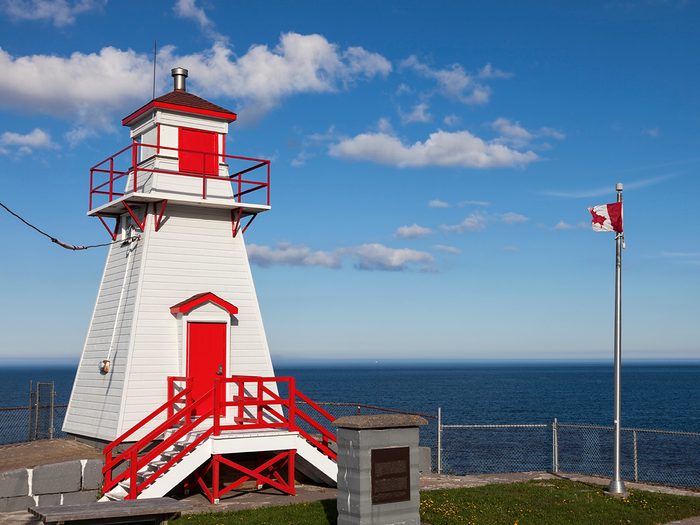
The Lighthouses of Newfoundland
The ever-changing waters of the North Atlantic are famous for their tumultuous storms, murky fog and hidden rock formations. Tragic shipwrecks and lost sailors were all too common along Newfoundland and Labrador’s rugged coastline until the first lighthouse appeared on the banks of Fort Amherst in 1813 (above). Since then, the province has seen an array of uniquely painted lighthouses pop up along its shoreline, safely guiding boats away from peril. Many of these historic landmarks are now open to tourists, so visitors can immerse themselves in the romantic charms of a solitary life by the sea.
Don’t miss this gorgeous gallery of historic Canadian lighthouses.
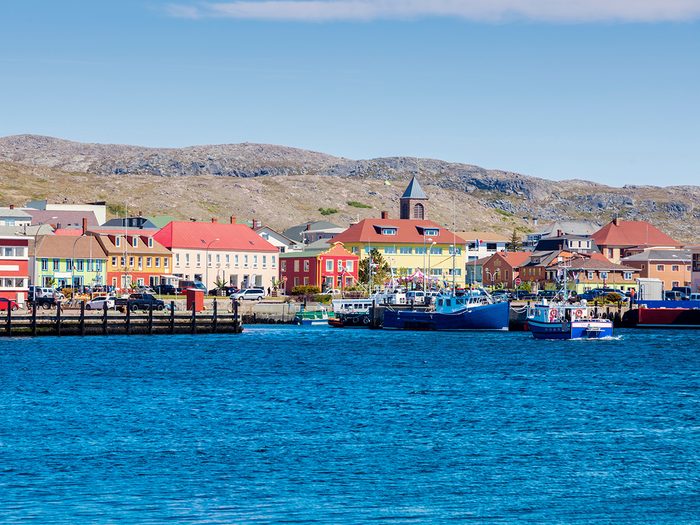
Saint-Pierre and Miquelon
For a taste of France without crossing the Atlantic, sail the short (25-kilometre) distance from Fortune, Newfoundland, to the French territory of Saint-Pierre and Miquelon. You’re not in Canada anymore! Nestled in the entrance to Newfoundland’s Fortune Bay, the islands are the only remaining piece of France’s colonial empire. Here, French is the native tongue and France’s blue, white and red flag proudly ripples in the breeze. Immerse yourself in French culture, indulge in delicious lobster and mussels fresh from the waters of the North Atlantic and experience France in a whole new way—without leaving Canada too far behind. Just don’t forget to pack your passport and plenty of Euros for souvenir shopping.
Find out more mind-blowing Canadian geography facts.

Green Gables Heritage Place in P.E.I.
Book lovers from around the globe flock to Prince Edward Island in the thousands to follow in the footsteps of one of Canada’s most cherished fictional characters, Anne of Green Gables. Lucy Maud Montgomery, the author of the internationally celebrated Anne stories, grew up in Cavendish and visited Green Gables frequently. The cozy farmhouse belonged to cousins of Montgomery’s grandparents and served as the inspiration for Anne’s fictional home. Visitors to Cavendish can enjoy a behind-the-scenes look inside the house that played a starring role in Anne’s tale. Green Gables Heritage Place is open from mid-May through to late October.
Take a virtual tour of most famous house in every province.
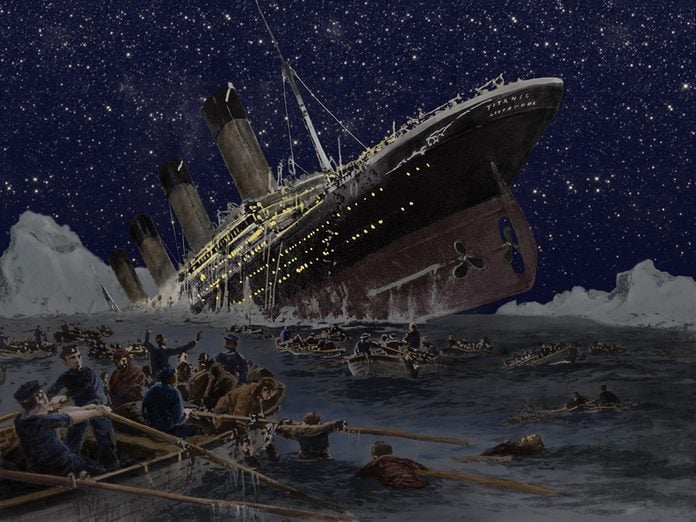
The Titanic Experience in Halifax
The Maritime Museum of the Atlantic tells the emotional story of Halifax’s connection to the 1912 Titanic disaster. The closest major seaport to the sunken ship, Halifax played a central role in the desperate search for Titanic victims. Ships sent from the port located 328 bodies, 150 of which are buried in Halifax cemeteries. During the recovery efforts, several rare artifacts were discovered floating in the chilly waters including a wooden deck chair, life jacket fragments and a tiny pair of leather children’s shoes. The artifacts and records on display at the Maritime Museum of the Atlantic serve as stirring reminders of this haunting tragedy.
You’ll also want to add these great day trips from Halifax to your itinerary.

The Birthplace of Confederation in P.E.I.
Ottawa may be Canada’s capital, but Charlottetown is the nation’s birthplace. In September 1864, delegates from the British colonies of New Brunswick, Nova Scotia, Prince Edward Island, and the province of Canada (Québec and Ontario) gathered at Charlottetown’s Province House to discuss banding together as one country. By July 1, 1867, the Dominion of Canada was born. Despite being involved in the original confederation discussions, P.E.I. didn’t officially join Canada until 1873. Today, tourists can celebrate Canada right where it all began. Marvel the magnificent neo-classical Province House, and interact with the Confederation Players—historically costumed guides who help tell the tale of Canada’s birth.
Looking to expand your visit beyond the east coast of Canada? Check out the 10 places in Canada every Canadian needs to visit.